Beyond The Snow-Skiing the Inuit Backcountry of Greenland with Seth Morrison
Skiing the Inuit Backcountry of Greenland with Seth Morrison
Words and Photos by Aurelie Gonin
There are places so strongly tied to mythical imagery that you can’t help but dream about them. And when their mountains are covered in ice and snows, of course, you want to go skiing there. Greenland is one of these mythical lands for me. I've always been fascinated by its white horizons and the Inuit people who live in its harsh environment. Last May, I finally got the chance to explore a slice of the country, sharing the adventure with Seth Morrison.
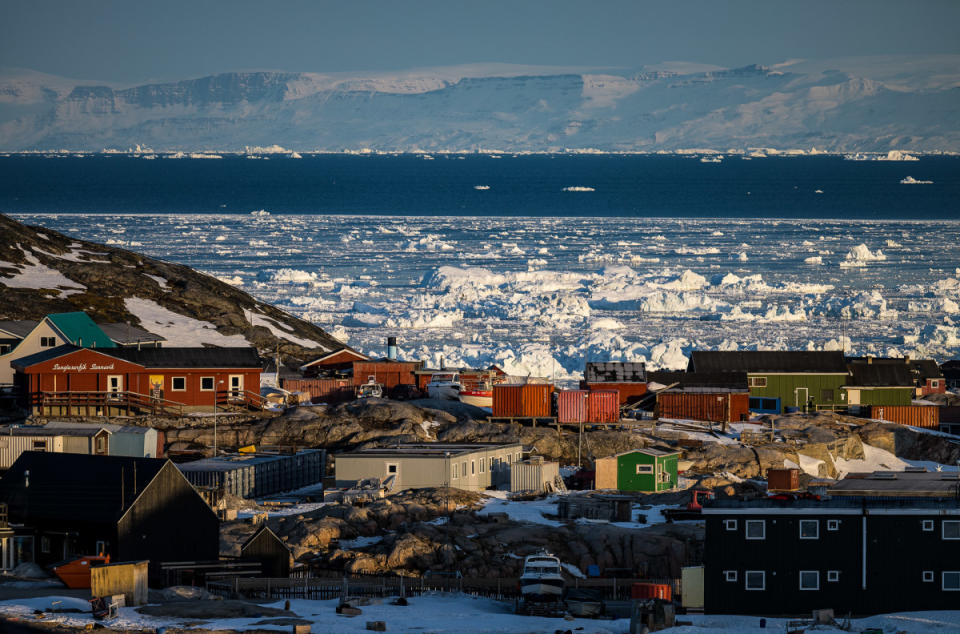
Photo: Aurelie Gonin
Coming to Greenland to ski, it was hard to get a sense of what we were going to find, as few skiers had come before. But the point of our trip was not to ski steep lines or jump off cliffs—it was to use skiing as a way to discover a little of this country.
I contacted some friends who had been guiding there, and they provided me with valuable information. A trip to Greenland is expensive, which is why most of the people who come here tend to be older and less active (at least when it comes to skinning up mountains). Most of them do heliskiing, bringing their own guides and staff and staying on sailboats or large yachts.
The easy way would have been for Seth and me to join one of these groups, but would that have given us a true experience of Greenland? I doubt it. I'm sure we would have enjoyed a few good runs and admired the scenery, but that's about it. A country is more than its landscapes.
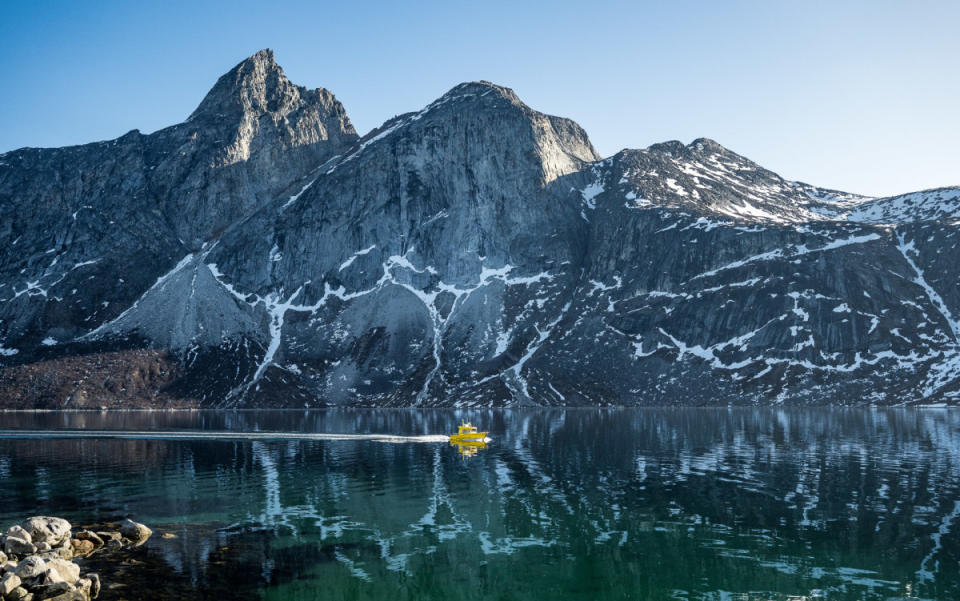
Aurelie Gonin
My research and connections put me in touch with Two Ravens, a guiding company led by native Greenlanders Adam and Thorlak, who are developing sustainable tourism excursions (everything from hiking and fishing to camping and ski touring) around Nuuk, Greenland’s capital. An introduction to their backcountry by local skiers seemed the ideal way to discover a bit of the area, as well as a form of tourism that can contribute to the population, not just take from it.
Greenland was colonized by Danish missionaries, who forced the Inuit to become Christians and crammed entire communities into gigantic buildings. Despite all the colonialists’ efforts, the Inuit preserved their culture and, in 1979, succeeded in gaining more independence, starting with the right to speak their own languages. But even today, young Greenlanders must go to Denmark to study. They’re taken away from their family and culture, and many never return because of the lack of job opportunities. In light of this, the Two Ravens' desire to initiate authentic, local tourism seemed to me to be the best way to visit this country and experience its culture.
Inooraq was our skiing partner, keen to share Inuit stories as we skinned up from the seashore to the iconic summits of the region. They rise to around 4,000 feet, offering great views of the area.
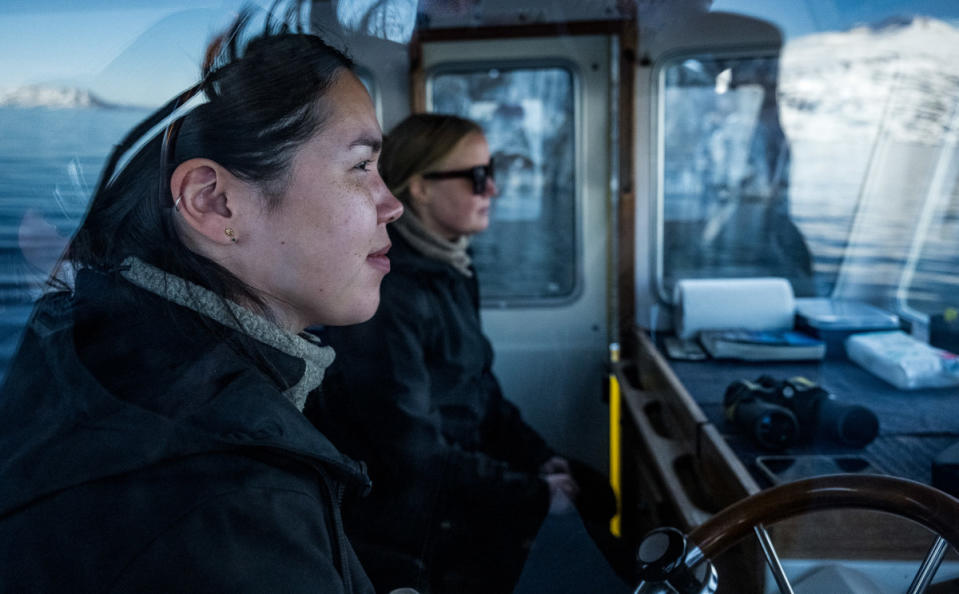
Aurelie Gonin
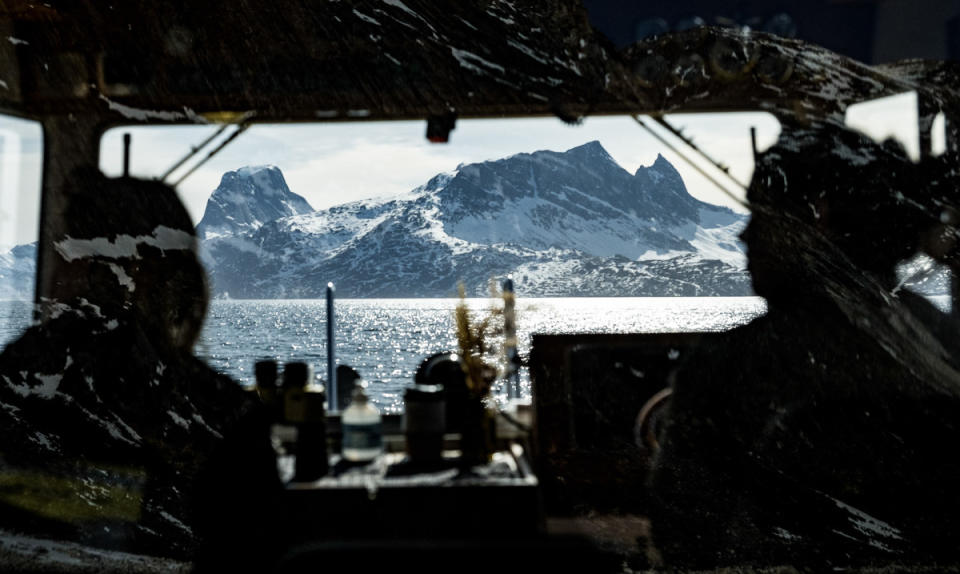
It's been the thrill of a lifetime to revitalize POWDER Magazine with daily online content to skiers across the globe, but one question was seemingly on the mind of nearly every skier: 'When is POWDER coming back to print?'
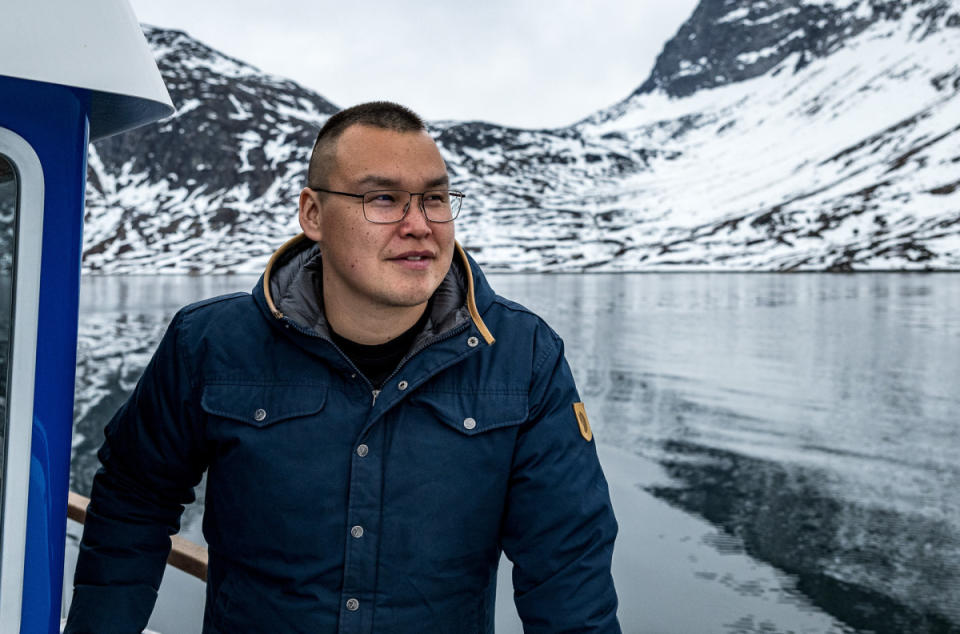
Photo: Aurelie Gonin
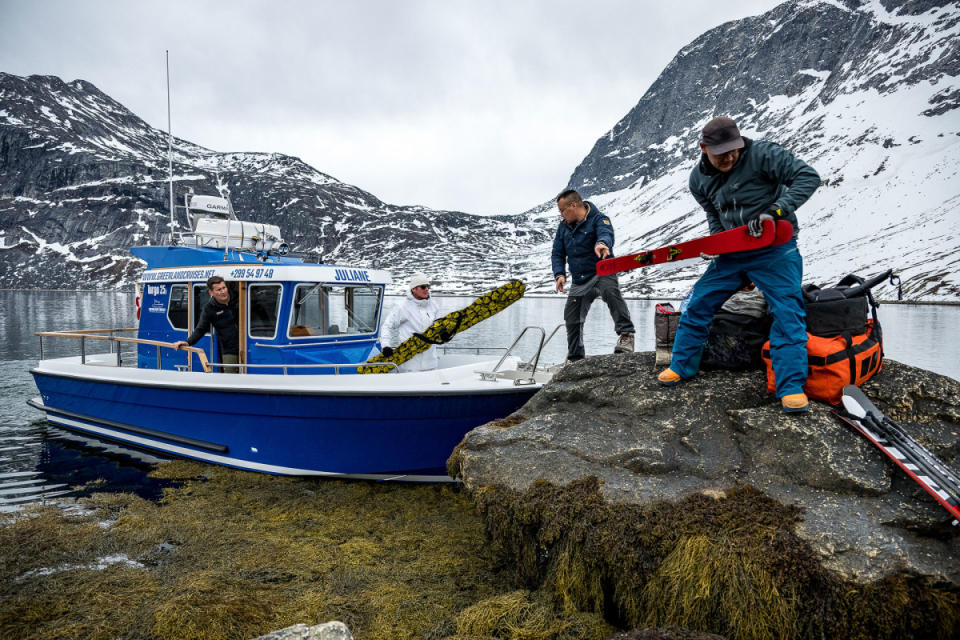
Aurelie Gonin

Aurelie Gonin
As it is surrounded by fjords, the best way to access these areas is by sea, using local water taxis. There’s no jetty, of course, so at low tide, you have to jump into a mini zodiac to reach the boat. Walking in ski boots on the slippery seaweed of the shore was probably the most dangerous part of the day, as slipping into the ocean was not an option. We wondered what a beacon would do for you, but we carried the safety gear for avalanches and crevasse rescue, as the terrain is quite glaciated.
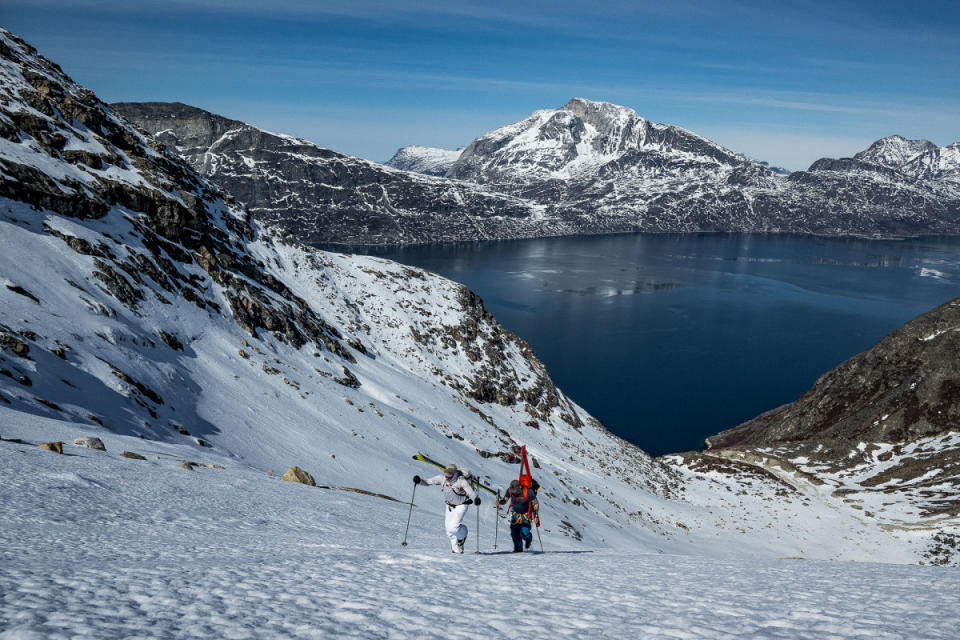
Aurelie Gonin
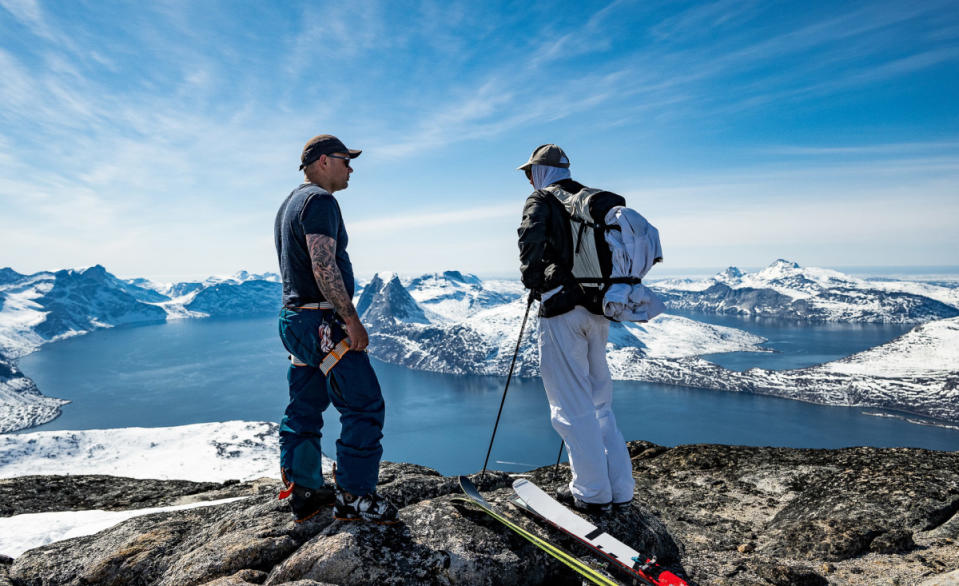
Aurelie Gonin
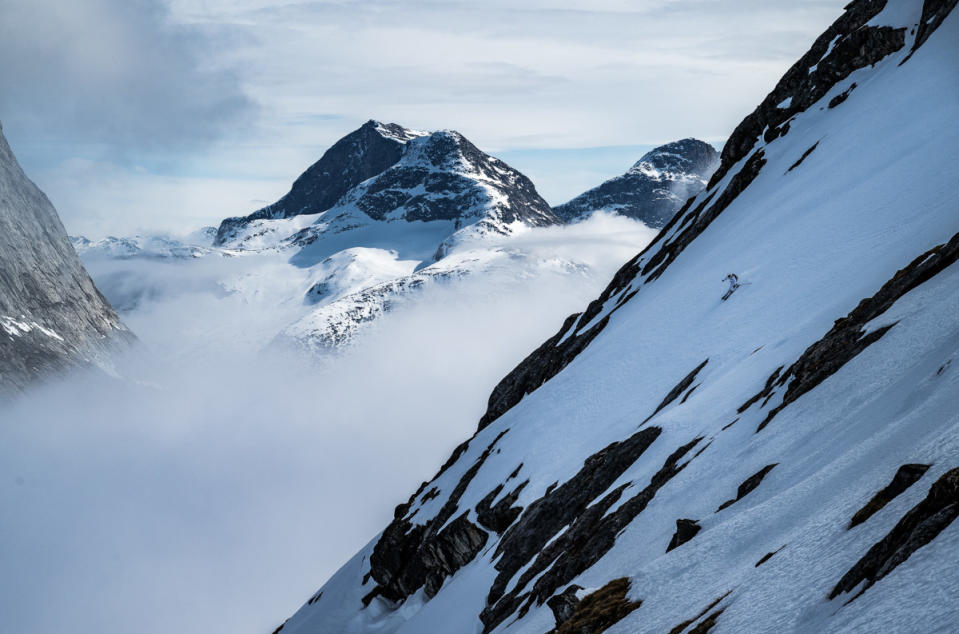
Aurelie Gonin
At the beginning of May, there was still enough snow to ski all the way to the sea, even though it hadn't snowed for weeks. Inooraq explained that "the last three years have been cold, but with very little snow. We miss the powder days and mainly use 95 skis now". Unfortunately, the situation is the same all over Europe, and wider skis tend to stay in the garage, brand new. What is very different here is that you don't see anyone. When you come from overrun places like Chamonix or Colorado, it feels good.
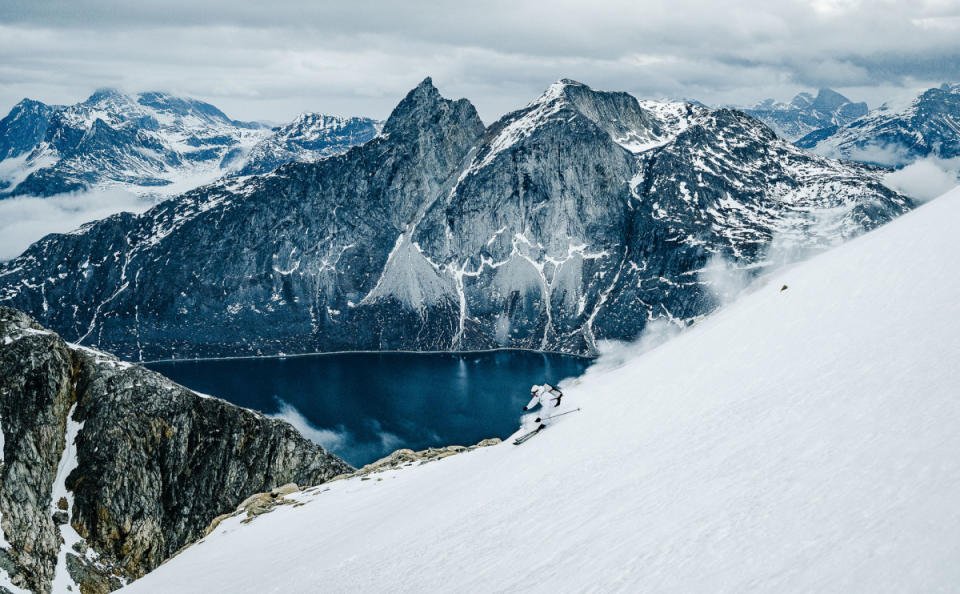
Aurelie Gonin
Inooraq showed us the venues he likes to ski, and Seth took the lead to explore some steeper couloirs too. The mountains were majestic—the weather bluebird on some days and cloudy on others, creating a classically Nordic ambiance—and the snowpack was typical of spring, from firm to soft depending on elevation and time of the day. There are not many places where you can ski with the sea as a backdrop, and being with Inooraq gave us the chance to appreciate more than just the scenery and the snow.
Adam and Thorlak set up camp on the shore of a fjord in an enclosed bay surmounted by huge cliffs. The area was stunning. It was early May, a time of year when the snow doesn't reach the shoreline, so our tents were pitched in the tundra.
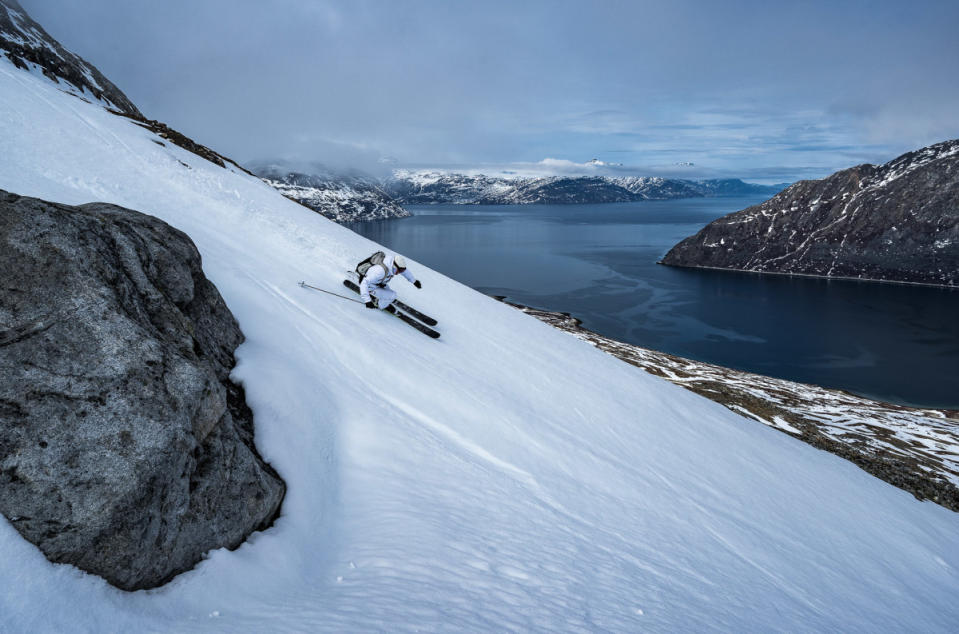
Aurelie Gonin
Our mattresses were caribou hides. These guys hunt to sustain their families with local meats instead of imported, farmed ones, and they keep the autumn skins that have more fur than the spring ones. The hides provide good insulation against the cold of the ground, and they smell real. Adam commented, "The pride of hunting to feed your family is coming back; more people are going for seal, caribou or muskox like in the old days." He brought a good piece of caribou to cook a delicious stew over a small fire that they call a "bonfire" (the remains of construction wood). Greenland is a gigantic island, but without any trees. When resources are precious, there's no waste.
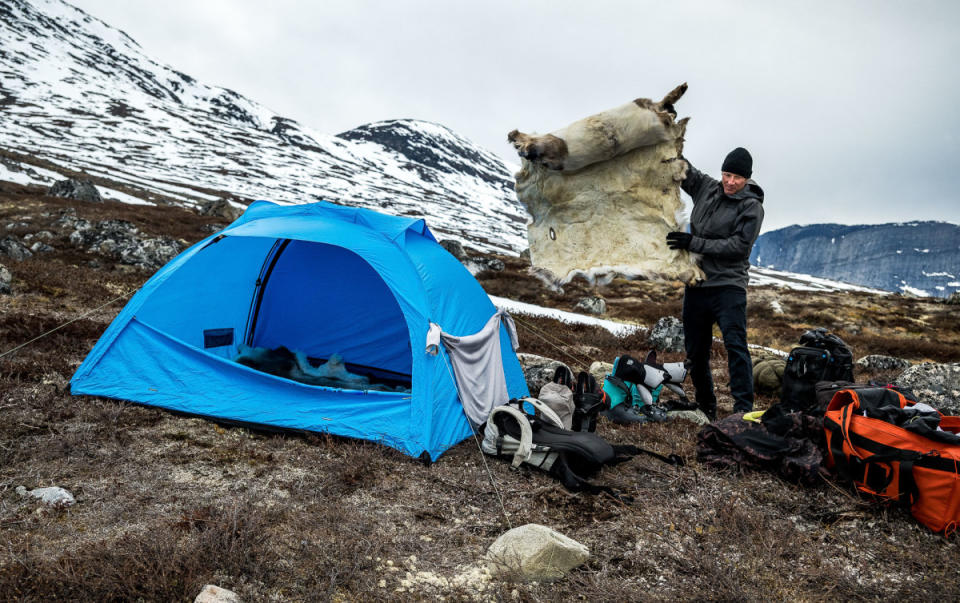
Photo: Aurelie Gonin
Earlier in the day, Thorlak went fishing and caught fresh sea urchins, mussels and cod, which we ate the traditional way, boiled in seawater and served seaside on a stone. He also brought some dry fish and mattak, which is made of whale skin, and explained, "whales are rich in Vitamin C, which has enabled our people to survive in this environment." I refused to eat whale sashimi in Japan, but on an island of 56,000 inhabitants, the stakes seem quite different. Here, I appreciated the opportunity to taste this traditional cuisine, and through it, a bit of Inuit culture. Vegetables, on the other hand, were not as abundant.
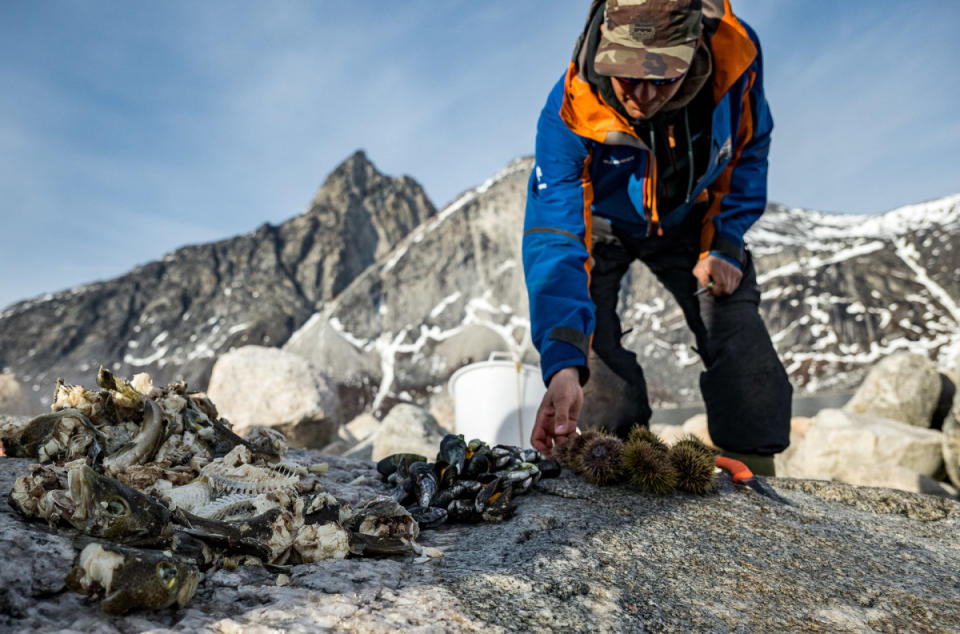
Photo: Aurelie Gonin
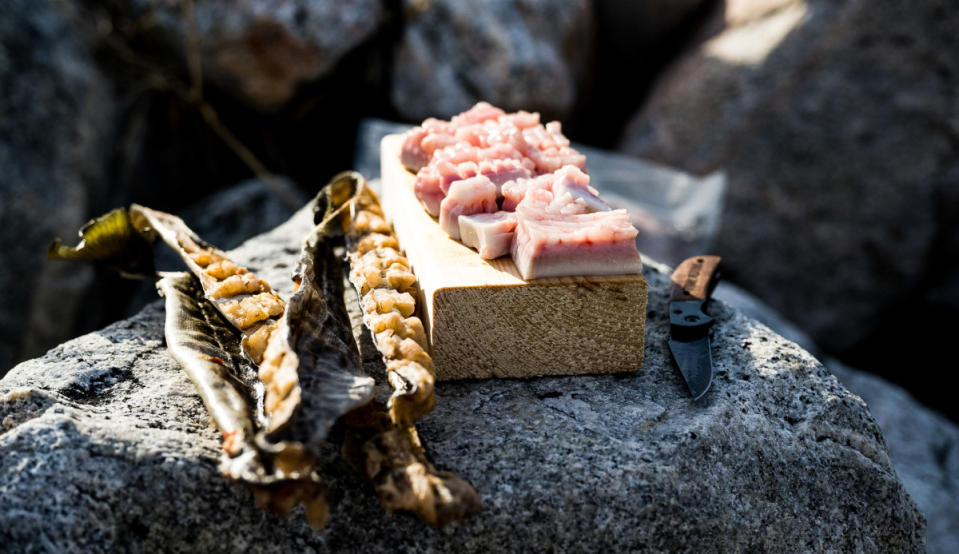
Photo: Aurelie Gonin
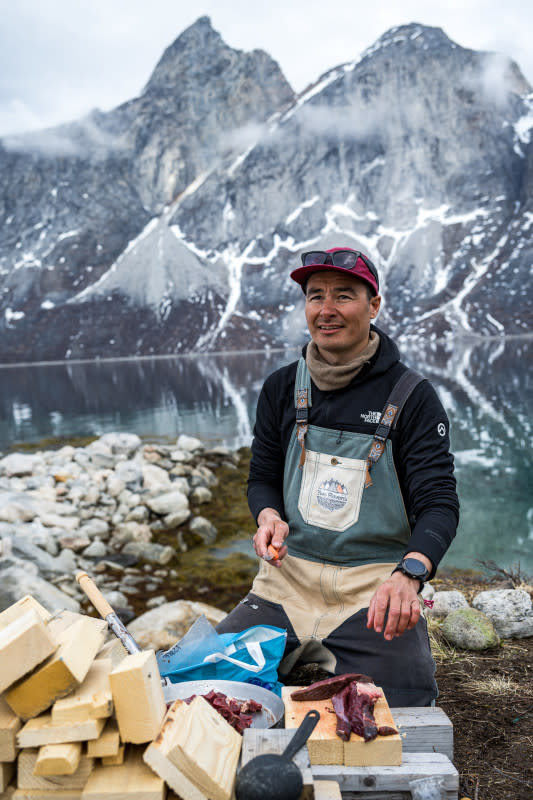
Photo: Aurelie Gonin
We were very far north. In early May, it hardly gets dark at night, and it’s freezing. We hung our liners and skins inside the tent to dry, and I put my cameras and drone batteries inside my sleeping bag to keep them warm and charged, as there was no power supply.
On the last day, the weather was not very promising. We woke up to a fine, cold rain. We wanted to try our luck, so we started hiking and skinning in the mist, from the camp to the peak above. Seth found this atmosphere "very Greenlandic" and broke the trail with no visibility but good motivation: "Never try, never know." Inooraq told us about the word for weather, "Sila," which is also the name of the greatest Inuit deity: "The only ruler of everything is Sila, and she's not making it easy for us today, but I never had a bad day of skiing which wasn't better than a good day on the couch.
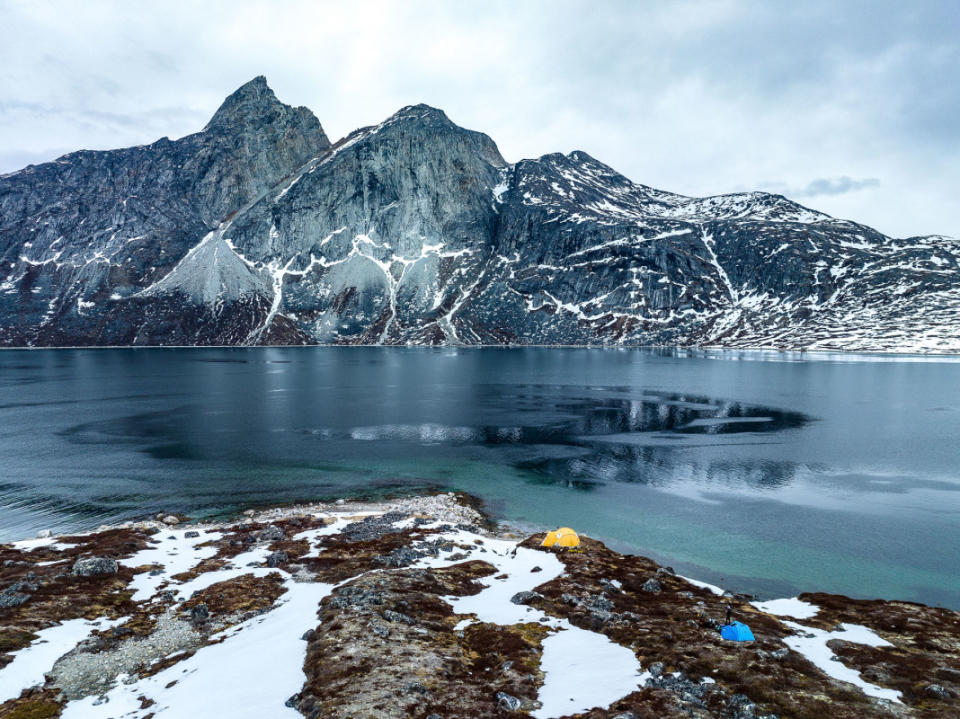
Photo: Aurelie Gonin
Perseverance often pays off, and when we reached the summit, we had a glass-off. The view of the surrounding cloud-covered peaks was fantastic. Inooraq was stoked. "This is my favorite place in the world. You feel close to something when you're up here. You have a price of admission to get here, and then you're greeted with this. It's very special." I feel what he means—there's something magical about this land.
Instead of skiing down by the way we skinned up, Seth found little passages through the cliffs to access more exciting terrain. I took the opportunity to snap some "edge of the world" shots of him skiing in his white suit, contrasting with the fjords and cloudy peaks in the background. We enjoyed every turn back to the camp by the sea, happy to share this time together. A few beers were all it took for Seth to strip off and jump into the cold water, living the moment to the fullest.
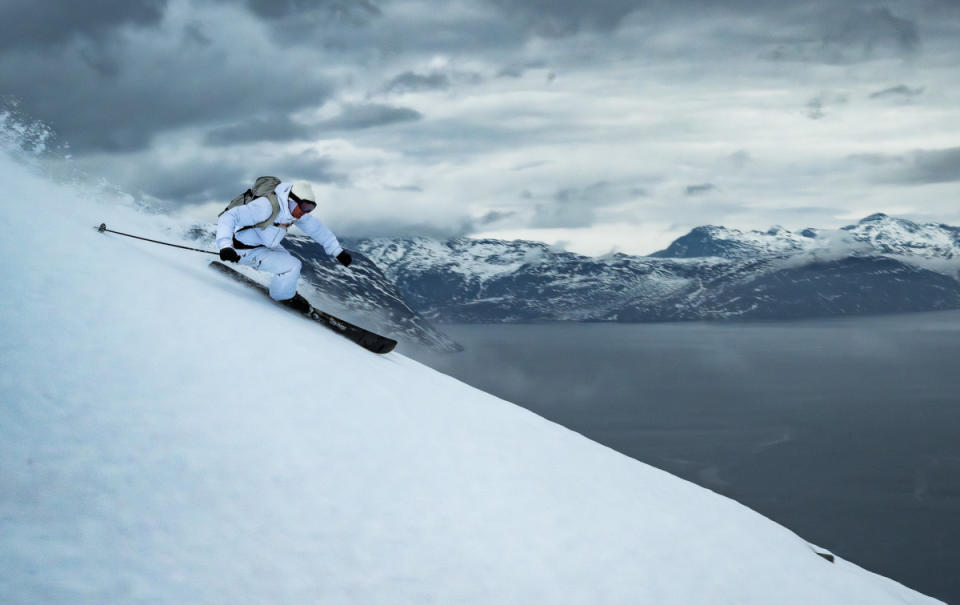
Aurelie Gonin
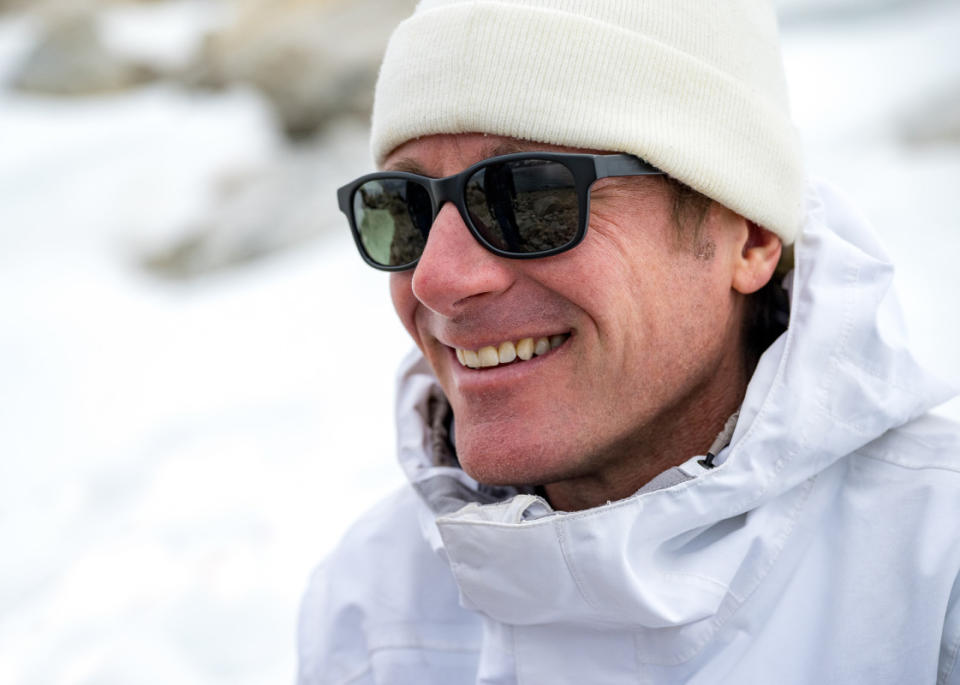
Aurelie Gonin
I feel very lucky to have had the chance to discover Greenland with these locals, who gave us a unique experience based on skiing but with a glimpse of Inuit culture.
We all travel for various reasons, but for me, it's not just about admiring landscapes ortaking the same selfie as the crowd in front of a monument!). It’s about meeting people, living other ways of life, and learning from different perspectives.
We come from different places, but as skiers, we share the same passion. I like to think of us as members of a global community of mountain people, doing our best to discover the truth of the places we ski and care for them and each other in a world that often makes it easier not to.

